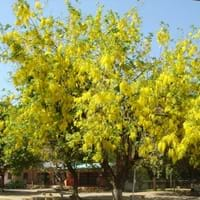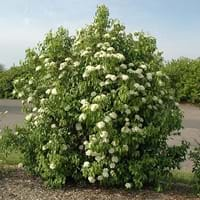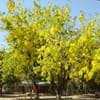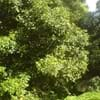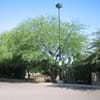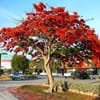Life Span
Perennial
Perennial
Type
Flowering Plants, Tree
Tree
Origin
India
Northeastern United States, Mid-Atlantic United States, Southeastern United States, North-Central United States, Central United States, Canada
Types
Not Available
Arrowwood Viburnum, American Cranberrybush, European Cranberrybush
Habitat
moist forests, Mountains, Subtropical forests, Tropical regions, Woodlands
Rocky areas, Stream side, Woodlands
USDA Hardiness Zone
Not Available
2-8
AHS Heat Zone
Not Available
8-1
Sunset Zone
Not Available
1a, 1b, 2a, 2b, 3a, 3b, 4, 5, 6, 7, 8, 9, 14, 15, 16, 17, 18, 19, 20, 21
Habit
Upright/Erect
Oval or Rounded
Flower Color
Yellow
White
Flower Color Modifier
Bicolor
Bicolor
Fruit Color
Not Available, White
Green, Light Yellow, Pink, Blue Violet, Black
Leaf Color in Spring
Dark Green
Green
Leaf Color in Summer
Dark Green
Green
Leaf Color in Fall
Dark Green
Red, Purple
Leaf Color in Winter
Dark Green
Not Available
Plant Season
Spring, Summer, Fall
Spring, Summer, Fall
Sunlight
Partial shade, Full Shade
Partial Sun, Partial shade
Growth Rate
Medium
Not Available
Type of Soil
Loam
Clay, Loam, Sand
The pH of Soil
Acidic, Neutral, Alkaline
Acidic, Neutral, Alkaline
Soil Drainage
Well drained
Average
Bloom Time
Summer
Spring, Late Spring
Tolerances
Drought
Drought
Where to Plant?
Ground
Ground
How to Plant?
Not Available
Seedlings
Plant Maintenance
Medium
Medium
Watering Requirements
Requires regular watering
Do not water frequently
In Summer
Lots of watering
Ample Water
In Spring
Moderate
Average Water
In Winter
Average Water
Moderate
Soil pH
Acidic, Neutral, Alkaline
Acidic, Neutral, Alkaline
Soil Type
Loam
Clay, Loam, Sand
Soil Drainage Capacity
Well drained
Average
Sun Exposure
Partial shade, Full Shade
Partial Sun, Partial shade
Pruning
Prune in flowering season, Remove damaged leaves, Remove dead branches, Remove dead leaves
Cut limbs, Remove damaged leaves, Remove dead branches
Fertilizers
All-Purpose Liquid Fertilizer, slow-release fertilizers
as it is a flowering plant, use high phosphorous content fertilizer
Pests and Diseases
Not Available, Red blotch
Downy mildew, fungus, Powdery mildew, Red blotch, Rust
Plant Tolerance
Drought
Drought
Flower Petal Number
Single
Not Available
Foliage Texture
Bold
Medium
Foliage Sheen
Matte
Matte
Attracts
Not Available
Birds, Butterflies
Allergy
Not Available
no allergic reactions
Aesthetic Uses
Showy Purposes
Showy Purposes
Beauty Benefits
Not Available
Not Available
Environmental Uses
Air purification
Food for birds, Wildlife, Windbreak
Medicinal Uses
Cold, constipation, Fever, Intestinal irritations, Skin Disorders
Asthma, Cramps, Diuretic, Fever, Nerve sedative, Palpitation
Part of Plant Used
Whole plant
Flowers, Fruits
Other Uses
Used as Ornamental plant, Used for its medicinal properties
Used As Food, Used for its medicinal properties
Used As Indoor Plant
No
No
Used As Outdoor Plant
Yes
Yes
Garden Design
Bedding Plant, Container, Houseplant, Mixed Border, Tropical
Feature Plant, Foundation, Fruit / Fruit Tree, Hedges, Screening / Wind Break
Botanical Name
Cassia fistula
VIBURNUM lentago
Common Name
golden shower tree
Nannyberry
In Hindi
अमलतास
Nannyberry
In German
Röhren-Kassie
Nannyberry
In French
Cassia fistula
alisier
In Spanish
Cassia fistula
Nannyberry
In Greek
Cassia συρίγγιο
Nannyberry
In Portuguese
Cássia-imperial
Nannyberry
In Polish
Cassia przetoka
Nannyberry
In Latin
cassia fistula
Nannyberry
Phylum
Magnoliophyta
Magnoliophyta
Class
Magnoliopsida
Magnoliopsida
Family
Fabaceae
Caprifoliaceae
Clade
Angiosperms, Eudicots, Rosids
Angiosperms, Asterids, Eudicots
Tribe
Not Available
Not Available
Subfamily
Not Available
Not Available
Number of Species
Not Available
Not Available
Season and Care of Cassia Fistula and Nannyberry
Season and care of Cassia Fistula and Nannyberry is important to know. While considering everything about Cassia Fistula and Nannyberry Care, growing season is an essential factor. Cassia Fistula season is Spring, Summer and Fall and Nannyberry season is Spring, Summer and Fall. The type of soil for Cassia Fistula is Loam and for Nannyberry is Clay, Loam, Sand while the PH of soil for Cassia Fistula is Acidic, Neutral, Alkaline and for Nannyberry is Acidic, Neutral, Alkaline.
Cassia Fistula and Nannyberry Physical Information
Cassia Fistula and Nannyberry physical information is very important for comparison. Cassia Fistula height is 1,300.00 cm and width 1,200.00 cm whereas Nannyberry height is 370.00 cm and width 240.00 cm. The color specification of Cassia Fistula and Nannyberry are as follows:
Cassia Fistula flower color: Yellow
Cassia Fistula leaf color: Dark Green
Nannyberry flower color: White
- Nannyberry leaf color: Green
Care of Cassia Fistula and Nannyberry
Care of Cassia Fistula and Nannyberry include pruning, fertilizers, watering etc. Cassia Fistula pruning is done Prune in flowering season, Remove damaged leaves, Remove dead branches and Remove dead leaves and Nannyberry pruning is done Cut limbs, Remove damaged leaves and Remove dead branches. In summer Cassia Fistula needs Lots of watering and in winter, it needs Average Water. Whereas, in summer Nannyberry needs Ample Water and in winter, it needs Moderate.
